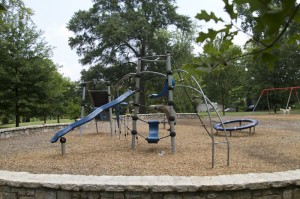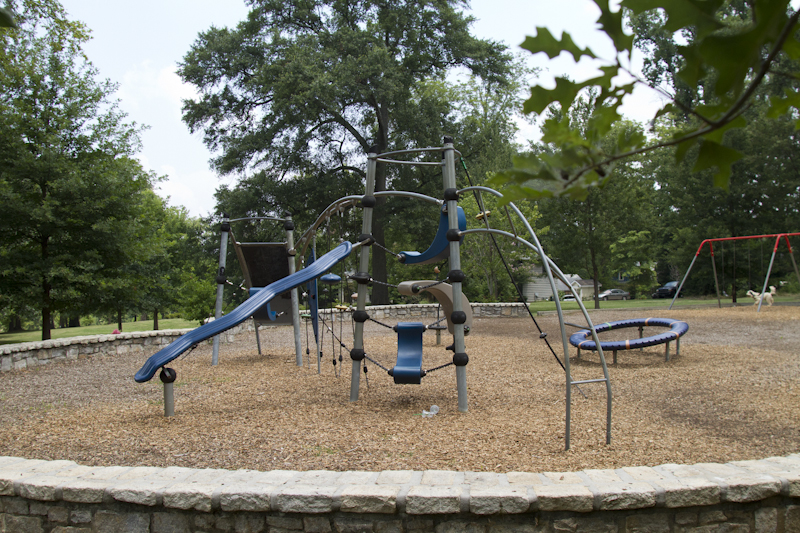
The future of parks in the present. Recognize anything from your childhood? -- Inman Park, Atlanta.
A few bumps, bruises and broken bones from playing on a playground might be good for kids after all. Playgrounds with safety features such as low height limitations and padded ground might be too safe, the New York Times reports, potentially preventing kids from developing emotionally and contributing to unnecessary anxiety later in life.
Risky play, such as climbing or wrestling, gradually exposes kids to dangers and helps them solve problems. What kids learn on the playground is a similar technique that therapists use to help conquer phobias in adults – starting small and working toward larger goals, such as reaching the top of the monkey bars – Ellen Sandseter, a professor of psychology at Queen Maud University in Norway, told the Times.
Some experts and parents disagree with the idea that playgrounds may be too safe, worrying fears may be introduced too early in a child’s life and ultimately develop into phobias. However, recent studies have shown quite the opposite, purporting that kids injured at a younger age are less likely to develop phobias toward risky behavior as those who didn’t experience the same life lessons.
“There is no clear evidence that playground safety measures have lowered the average risk on playgrounds,” David Ball, a risk management professor at Middlesex University in London, told the Times. “This sounds counterintuitive, but it shouldn’t … If children and parents believe they are in an environment which is safer than it actually is, they will take more risks. An argument against softer surfacing is that children think it is safe, but because they don’t understand its properties, they overrate its performance.”

Seesaws may be out, but spring-powered space ships look like they are here to stay -- Inman Park, Atlanta.
Another factor is boredom. While the added safety features may work great for toddlers, teenagers and older children may get bored with, say, the reduced height of the monkey bars and seek a more thrilling play experience in more dangerous environments, or not at all.
Long-time fixtures such as slides and seesaws have slowly vanished from America’s playgrounds in recent decades due to a number of reasons, including parental concerns, federal guidelines and the fear of lawsuit. Some consider the ultra-safe, enclosed playground platforms of the 80s and 90s an overreaction, but few seem willing to return to the rough-and-tumble days of playground’s past.
More recently, industry has introduced some creative solutions.
The monkey bars and tire swings may be out, but the next generation of doohickies and thing-a-ma-jigs are just starting to make their way into the every day lives of today’s youth.
Photography: Clay Duda, JJIE Staff
